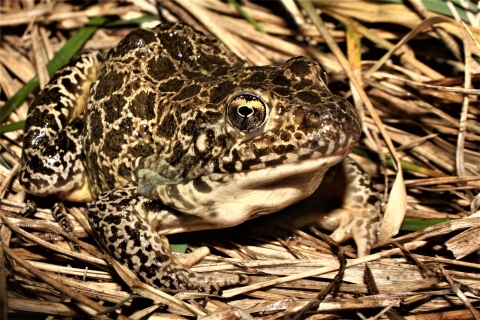Projects and Research
Refuge staff have been monitoring and managing small wetlands to improve habitat for state endangered crawfish frogs for many years. Crawfish frogs need shallow potholes that dry up in the summer months to deposit their eggs in to prevent egg predation by fish. Many seasonal potholes have been created or restored on the refuge and now crawfish frogs are increasing in numbers.
Saw-whet owls, a species that nests in the far north, migrate through the refuge area every winter. In cooperation with local universities the refuge does saw-whet banding every November to learn more about the status and distribution of the species. Owls are captured at night in mist-nets and measurements and information are taken before the birds are banded and released.
Wet, flat forest communities known as flatwoods are common on the refuge and contain several rare species, including the four-toed salamander and the locally endemic streamside salamander. Refuge interns and university researchers periodially do surveys of reptiles and amphibians to monitor refuge populations. The caves, seeps and springs of the refuge are also unique for their invertebrate fauna and some invertebrate species new to science were described in these caves.
Other refuge research projects have involved monitoring endangered Indiana bats, American burying beetles, and American kestrels. Volunteers have assisted with many surveys of forest and grassland bird nest productivity, cerulean warbler nesting ecology, and small mammal biodiversity inventories.




